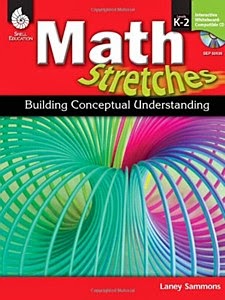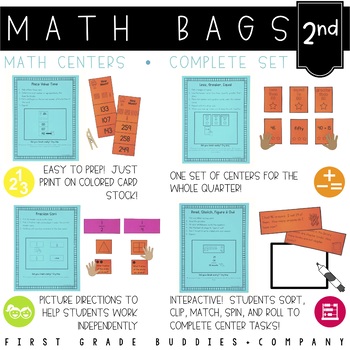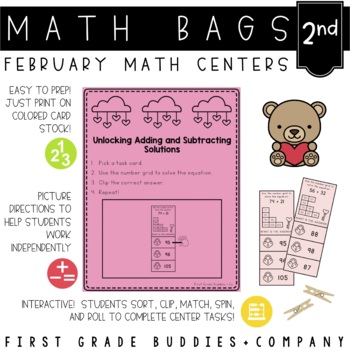It's FRIDAY!
Thanks for flying on over for our Fabulous Finds Friday Linky and Five for Friday with Doodle Bugs Teaches!
Fabulous Find: Math Stretches
A couple of summers ago, I heard about Laney Sammon's book Guided Math. I just knew I had to buy it and read it for myself. Guided math was something I always wanted to do, especially since I had been doing and loving guided reading for 10 years, but I just couldn't quite grasp how to get it up and running in my classroom. Her book was great and I really liked her idea of Math Stretches. They are short, simple math activities the kids do to "stretch" their brain into thinking mathematically.
Well fast forward to about a month ago. I read (probably on a blog, or Pinterest) that Ms. Sammons came out with a book that focused just on Math Stretches and ordered it immediately (don't ya just LOVE Amazon Prime:). The book I ordered is geared to K-2 and it is fabulous!! Ms. Sammons has GREAT math stretches in all areas of math (number knowledge, algebraic operations, measurement, geometry, data). I have it ready to go when my students arrive in the morning, and we discuss the stretch at the beginning of our math block. She has everything laid out in this book and even when I have a sub, the sub can read the explanation and what the students are to do. Something I don't have to write in sub notes!
This is the K-2 book I have. She has them available in 3-5, and 6-8 also.
I HIGHLY recommend it!
If you have never tried writing two-word poems with your kids, they are a great for any age! What's so nice about two-word poems? The format is EASY, a two-word poem can be written about ANYTHING, and writing them is a great opportunity for students to use strong adjectives and verbs (personification, too--though I do not use that term with my second graders). Courtney and I just got done doing two-word winter poems with our kids. The first step was for students to brainstorm any words/ideas that came to their minds when they thought of winter. The lists were long. To reinforce the use of adjectives, we worked as a class to generate some strong adjectives that could be used to describe various nouns that students had on their lists. Students circled all of the nouns on their lists, and this was a reminder that adjectives could be used to describe those winter ideas (if they chose to include them in their poems). We also talked about using strong verbs and describing those actions. We have not worked specifically on the term adverbs as of yet, but this was an introduction to this concept. The next step was for each student to choose a focus for his/her poem. Some choices were snow (in general), fun in the snow, snowflakes, bundling up, a fireplace, and hot cocoa. Finally, students were off and working on their poems. The rules--two-words per line with a minimum of 5 lines. Oh--and their ideas must "fit together" and make good sense. I did not provide a lot of guidance during the writing stage. Students' creations were fabulous! They were perfect to accompany our wintery tree artwork.
Eats, Shoots, and Leaves: Mini-Lesson & Class Book
Many of you have probably seen this mentor text for teaching conventions (use of commas) in writing--Eats, Shotts, and Leaves by Lynne Truss. I saw a need for more work with using commas consistently and correctly to separate words/ideas in a series within the context of student's writing, so I decided to use this text for a mini-lesson. It's a fun, yet useful, presentation of how important it is to use commas correctly. While it presents the use of commas in various ways, other than to separate words/ideas in a series, its illustrations help students understand the purpose of punctuation--to tell their readers how to read their writing.
Here's an overview of the mini-lesson:
Read aloud text. Students will laugh! Stop to discuss why the text is so funny. Students will realize how one small thing, a comma, can change how a simple sentence is read. Reassure students that they do not need to know all of the different ways commas are used in the text. Yet, let them know they will need to use commas correctly to separate words/ideas in a series. Ask students if they remember a page in the text where the author used this skill. Revisit these pages. Tell students they will get a chance to use commas in this way in the creation of a class book. Project pages from the text that are specific to the skill being taught. Then give each student a prompt such as, My __________ loves to... Model using the prompt to write a sentence with the use of commas. Example: My grandson loves to drink chocolate milk, play Batman, and listen to me read. After students have finished writing their sentences, tell them to close their eyes and picture what is happening or being described. Then allow students to illustrate. Compile student work into a class book for future enjoyment and easy reference.
Here's an overview of the mini-lesson:
Read aloud text. Students will laugh! Stop to discuss why the text is so funny. Students will realize how one small thing, a comma, can change how a simple sentence is read. Reassure students that they do not need to know all of the different ways commas are used in the text. Yet, let them know they will need to use commas correctly to separate words/ideas in a series. Ask students if they remember a page in the text where the author used this skill. Revisit these pages. Tell students they will get a chance to use commas in this way in the creation of a class book. Project pages from the text that are specific to the skill being taught. Then give each student a prompt such as, My __________ loves to... Model using the prompt to write a sentence with the use of commas. Example: My grandson loves to drink chocolate milk, play Batman, and listen to me read. After students have finished writing their sentences, tell them to close their eyes and picture what is happening or being described. Then allow students to illustrate. Compile student work into a class book for future enjoyment and easy reference.
Here are some pages from our class book...
Math Bags
One night, when reading the many wonderful blogs I visit, I came across First Grade Buddies. I read how they incorporate Math Bags during their math block. Now I spend A LOT of my nights and weekends printing, laminating, and cutting activities for my math workstations, and was looking for something that was simple, but still reinforced the math skills my students need. Their Math Bags were just what I was looking for. They have created math skill activities that my students can do independently. I love how the directions for students are easy to follow, I love that I don't have to use colored ink, I love that they reinforce skills we have worked on in the classroom, and I love that they meet Common Core standards. They are a win, win with me!
I purchased the 2nd grade set, but I know they have them available for Kindergarten and 1st also. I purchased the seasonal Valentine's Day version too!
New Clipart
Another snow day this week meant some extra time to create some new clipart!
Check them out in my Graphics by Sarah Beth TpT Store!
Feel free to link up your fabulous finds! Have a wonderful weekend!
























I love the two word winter poems. The kiddos were pretty clever with their poems. Your digital frames would match my digital paper that I just put in my shop about 2 days ago. It looks like we both have Dr. Seuss on the brain. I am going to have to add those to my wish list. They are super cute!!! Thanks for sharing!
ReplyDeleteJamie
Thank you for sharing all of these wonderful finds. I love the two word poems. I will have to give them a try. Eats, Shoots and Leaves is by far my favorite mentor text for teaching commas.
ReplyDeleteHave a great weekend!
Mary
Fit to be Fourth